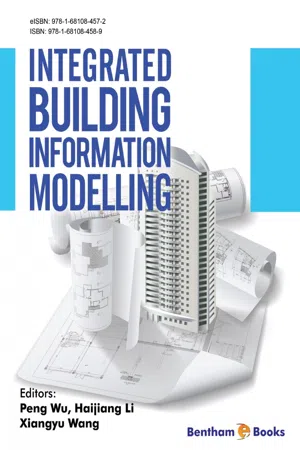
- English
- ePUB (mobile friendly)
- Available on iOS & Android
Integrated Building Information Modelling
About This Book
Building information modelling (BIM) is a set of interacting policies, processes and technologies that generates a methodology to manage the essential building design and project data in digital format throughout the building's life cycle. BIM, makes explicit, the interdependency that exists between structure, architectural layout and mechanical, electrical and hydraulic services by technologically coupling project organizations together.
Integrated Building Information Modelling is a handbook on BIM courses, standards and methods used in different regions (Including UK, Africa and Australia). 13 chapters outline essential information about integrated BIM practices such as the BIM in site layout plan, BIM in construction product management, building life cycle assessment, quantity surveying and BIM in hazardous gas monitoring projects while also presenting information about useful BIM tools and case studies. The book is a useful handbook for engineering management professionals and trainees involved in BIM practice.
Frequently asked questions
Information
Estimation of Input Parameters Used in Site Layout Planning through Integration of BIM, Project Schedules, Geographic Information Systems and Cost Databases
Ahmed W.A. Hammad, Ali Akbarnezhad*, David Rey
Abstract
* Corresponding author Ali Akbarnezhad: School of Civil and Environmental Engineering, The University of New South Wales, Sydney, Australia; Tel: (+61 2) 9385 9504; E-mail: [email protected]
INTRODUCTION
Table of contents
- Welcome
- Table of Contents
- Title Page
- BENTHAM SCIENCE PUBLISHERS LTD.
- FOREWORD
- PREFACE
- List of contributors
- Worldwide BIM Overview
- BIM Application and Adoption in the UK Housing Sector
- An Analysis of the Integration of Building Information Modelling (BIM) in Standard Construction Contracts
- A Case Study of Preparing and Managing Final As-Built Model for Owner Beyond Project Closeout
- Estimation of Input Parameters Used in Site Layout Planning through Integration of BIM, Project Schedules, Geographic Information Systems and Cost Databases
- A Review of Industry Foundation Class (IFC) Based Data Exchange Model
- Exploring the Deployment of Building Information Modelling (BIM) for Construction Products Management
- Integrated BIM Usage in Construction Project Management: As a Way of Enhancing Sustainability and Lean Performance of Construction Industry
- BIM-Integrated Life Cycle Assessment in Environmental Analysis – Current Status and Future Development
- The Impact of Building Information Modelling on Quantity Surveying Practice and Project Performance
- Development of BIM Courses in Civil Engineering
- Applications of Hazardous Gas Monitoring Integrated WSN and BIM Technologies in Underground Construction Sites
- The Future of BIM Technologies in Africa: Prospects and Challenges